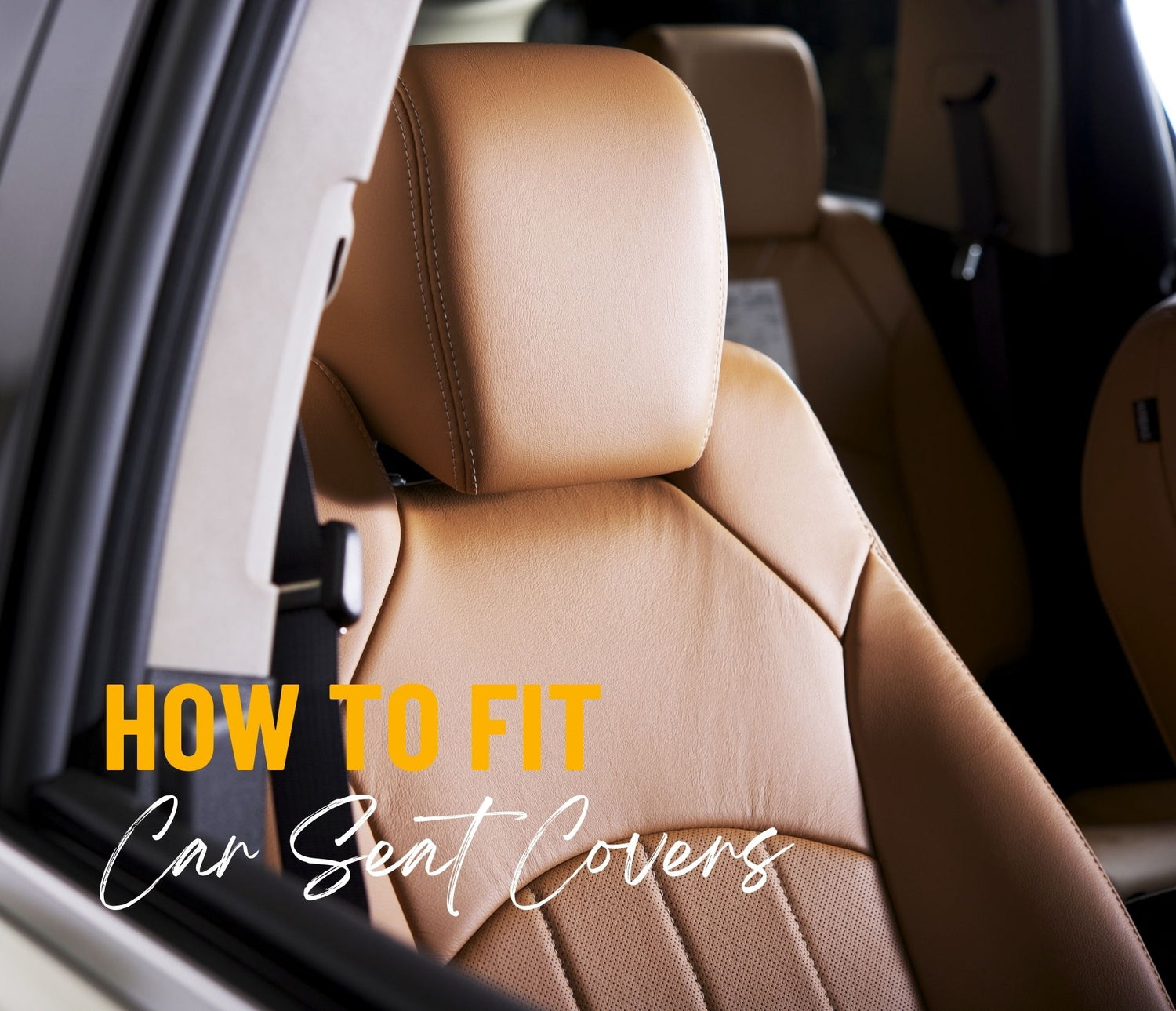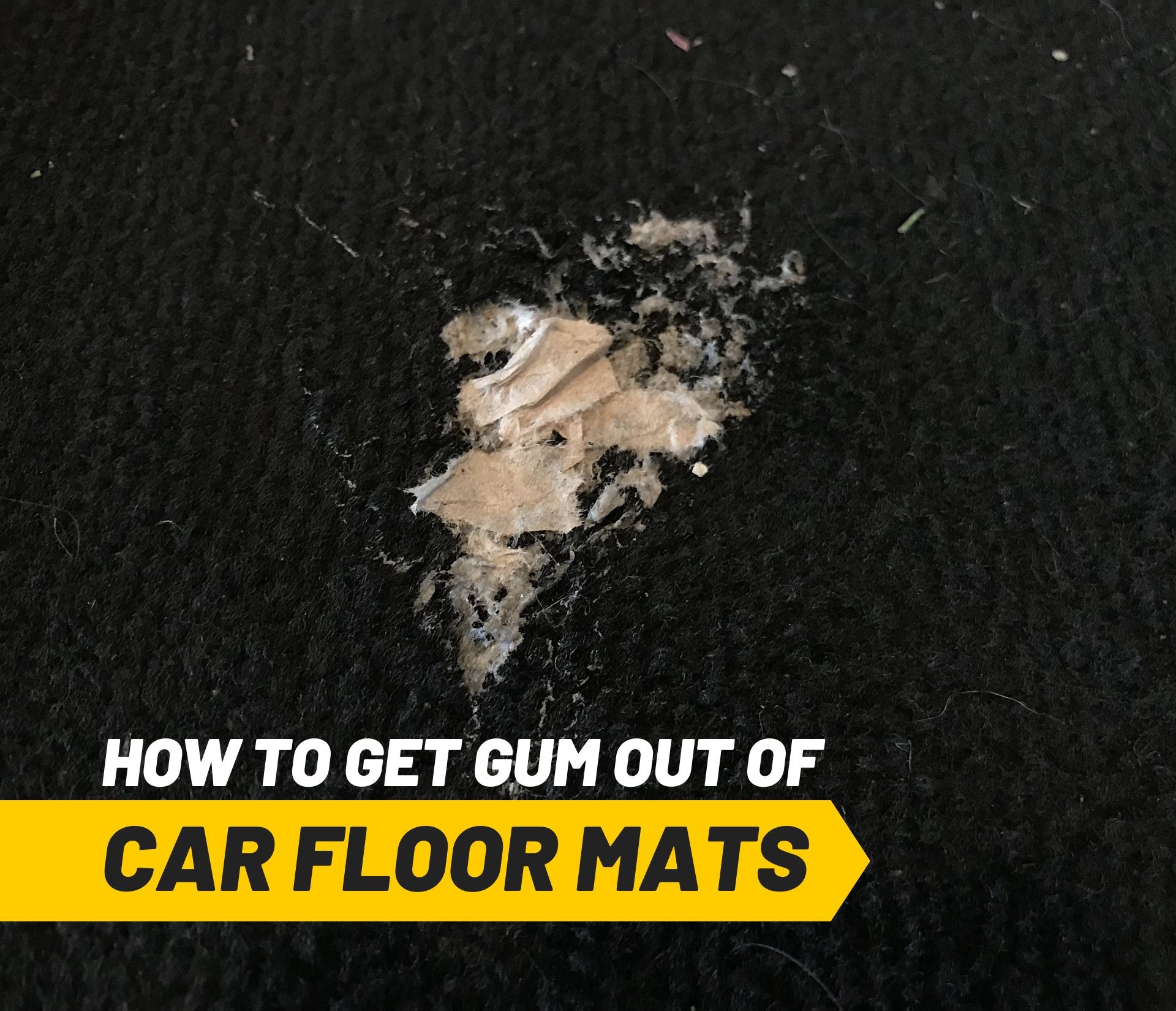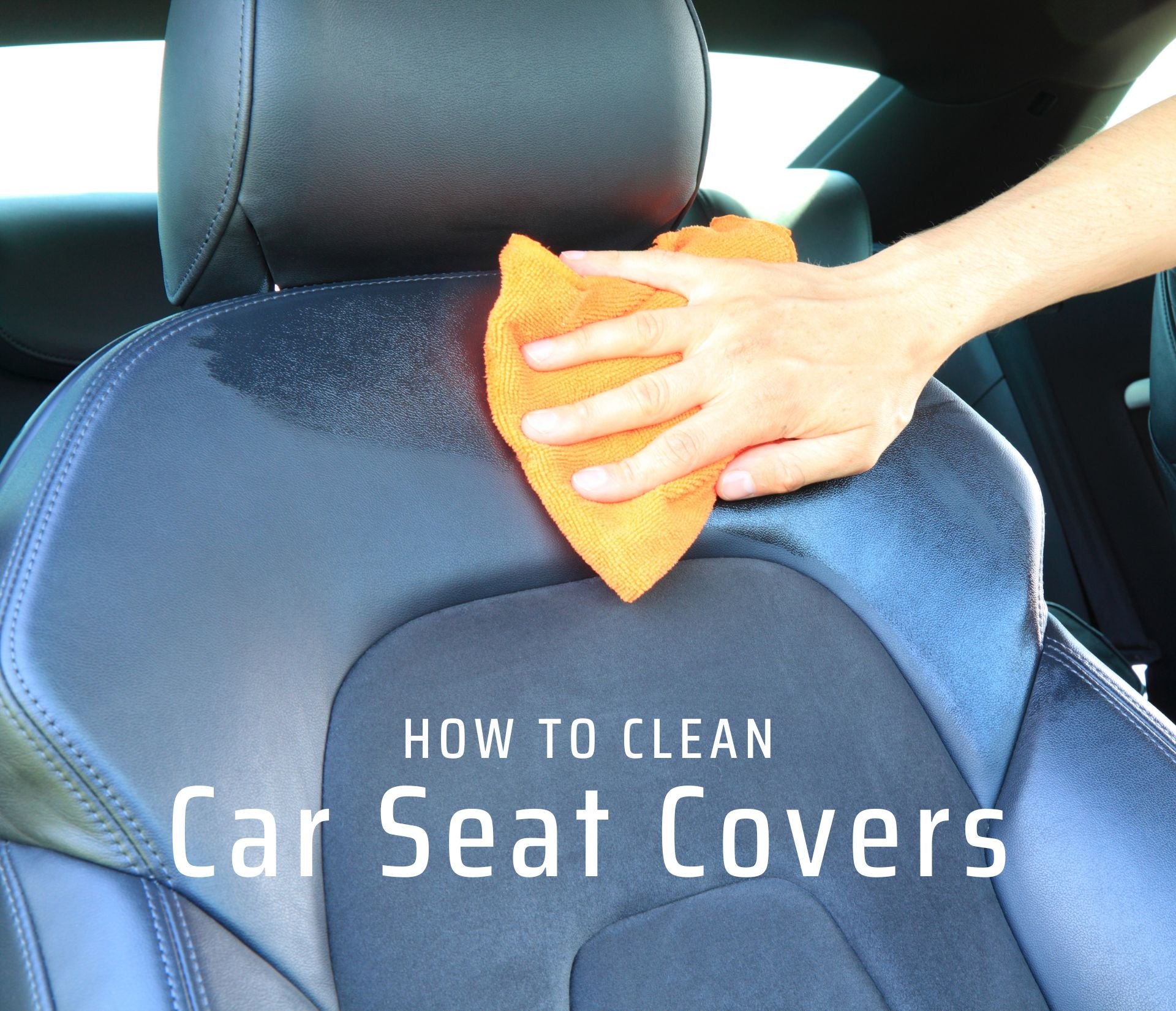Fitting new car seat covers can completely transform the look and feel of your vehicle's interior. Old, worn-out seat covers can make your car seem dated and worn down. Replacing them with fresh, stylish seat covers is an easy and affordable way to update your car's aesthetic.
In this guide, we'll walk you through the entire process of fitting car seat covers, from choosing the right covers to properly installing them. We'll provide tips and tricks to make the job quick and easy. So read on to learn how to give your car seats a fresh new look with custom-fitted covers!
Why Use Car Seat Covers?
Before we delve into the fitting process, let's understand why car seat covers are a worthwhile investment.

- Protection: They safeguard your seats from spills, stains, pet hair, and general wear and tear.
- Aesthetics: With a wide range of designs, colors, and materials, seat covers can significantly enhance your car's interior.
- Comfort: Some seat covers come with additional padding or ergonomic features, enhancing the comfort of your seats. Long drives become more enjoyable with the right cushioning and support.
- Style: With a vast array of options available, you can find seat covers that perfectly match your personal style. From sleek leather covers to vibrant and playful designs, the choices are endless.
- Versatility: Car seat covers come in different materials and designs to suit various preferences and requirements. Whether you have pets, need waterproof covers, or prefer a luxurious feel, there's a perfect option for you.
Selecting the Right Car Seat Covers
The first step is choosing seat covers that fit your specific vehicle and taste. Here are some factors to consider when shopping for new seat covers:
Vehicle Make and Model
- Seat covers are made to fit specific vehicle makes, models, and years. So you'll first want to determine the exact make, model, year, and trim level of your vehicle.
- This ensures you get covers that hug the contours of your seats properly. Ill-fitting covers won't look right and can come loose over time.
Fabric and Color Choices
- Popular seat cover materials include neoprene, leather, faux leather, polyester, nylon, and vinyl. Consider factors like durability, ease of cleaning, comfort, and style.
- Color choices are vast, from basic black to vibrant patterns. Choose a color complementary to your vehicle's interior that fits your personal style.
Seat Types
- Make sure to get covers made for your specific seat types - front seats, back seats, bucket seats, bench seats, etc. Measure your seats or check your owner's manual to identify your seat models.
Additional Features
- Some covers come with extras like built-in seat heaters, console covers, headrest covers, and more. Decide if any additional features are appealing to your needs.
Thoroughly researching seat cover options for your exact vehicle pays off in terms of fit, appearance, and functionality down the road.
Preparing for Installation
Before you start the installation process, here are a few things you need to do:
- Clean Your Seats: Ensure your seats are clean and dry before installing the covers. This prevents dirt and debris from causing discomfort or damaging the covers.
- Read the Instructions: Most seat covers come with specific installation instructions. Familiarize yourself with these before starting the process.
Installing Front Seat Covers
Now, let's get to the actual process of fitting your car seat covers. We'll start with the front seats.
Step 1: Remove the Headrest
Most front seats have removable headrests. Start by taking these off to make the installation process easier.
Step 2: Slide the Cover Over the Seat
Next, slide your seat cover over the top of the seat, ensuring it aligns with the seat's contours. If you're using bucket seat covers, they should fit snugly over the individual front seats.
Step 3: Secure the Cover
Once the coveris in place, secure it. This usually involves tucking in the cover, securing straps under the seat, or using hooks to hold the cover in place. Make sure the cover is tight and smooth to prevent wrinkles and shifting.
Step 4: Cut Holes for the Headrest
If your seat cover doesn't have pre-cut holes for the headrest, you'll need to make them. Place the headrest back onto the seat to mark where the holes should be, then carefully cut small slits in the cover. Be sure to cut smaller holes than you need - they will stretch when you replace the headrest.
Step 5: Replace the Headrest
Finally, push the headrest back through the holes you've cut in the cover and reattach it to the seat. Make sure it's secure and that the cover fits well around it.
Installing Rear Seat Covers
Installing rear seat covers, such as back seat covers or 60/40 seat covers, follows a similar process. However, there may be additional steps depending on your car's design.
Step 1: Lower the Backrest
Start by lowering the backrest of your rear seats. This will make it easier to fit the cover over the seat.
Step 2: Fit the Cover Over the Seat
Just like with the front seats, slide the cover over the seat, making sure it aligns with the seat's shape. If your car has a split rear seat, you'll need to fit the cover over each section separately.
Step 3: Secure the Cover
Secure the cover in place, ensuring it's tight and smooth. This may involve tucking in the cover, securing straps, or using hooks.
Step 4: Cut Holes for Seat Belts
If your seat cover doesn't have pre-cut holes for the seat belts, you'll need to make them. Mark where the holes should be, then carefully cut small slits in the cover.
Step 5: Raise the Backrest
Once the cover is secure, raise the backrest and make any necessary adjustments to the cover.
Maintaining Your Seat Covers
Once your seat covers are installed, it's important to maintain them properly. This will extend their lifespan and keep them looking great. Here are a few tips:
- Cleaning: Most seat covers can be cleaned with a damp cloth or vacuumed. However, some materials, like leather, may require special cleaning products.
- Regular Checks: Regularly check your seat covers for signs of wear and tear. If you notice any damage, it's best to repair or replace the cover as soon as possible to prevent further damage to your seats.
Frequently Asked Questions
Can I install car seat covers if my vehicle has side airbags?
Yes, you can still install car seat covers if your vehicle is equipped with side airbags. However, it's crucial to choose seat covers specifically designed to accommodate side airbags. These covers have special stitching or panels that allow the airbags to deploy safely in the event of an accident.
Can I install car seat covers if my seats have built-in seat heaters?
Yes, many car seat covers are compatible with seats that have built-in seat heaters. Look for seat covers that are designed to be heat resistant and have appropriate openings for the heating elements. Ensure that the seat covers do not impede the functionality of the seat heaters.
How often should I clean my car seat covers?
The frequency of cleaning depends on factors such as usage, spills, and general wear and tear. As a general guideline, aim to clean your seat covers every three to six months. However, it's essential to address any stains or spills promptly to prevent them from setting and becoming more difficult to remove.
Can I use car seat covers if my car has leather seats?
Certainly! Car seat covers can be used with leather seats to provide an additional layer of protection. Look for seat covers specifically designed for leather seats, as they offer a secure fit and do not damage or scratch the leather surface.
Conclusion
Fitting car seat covers is a simple process that can greatly enhance your driving experience. Whether you're looking for protection, comfort, or style, Alex Car has a wide range of seat covers to suit every need. With the right care and maintenance, your seat covers can keep your car's interior looking great for years to come.




Leave a comment
This site is protected by hCaptcha and the hCaptcha Privacy Policy and Terms of Service apply.